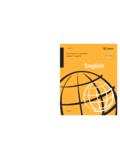Transcription of Patterning and Algebra, Grades 4 to 6 - eWorkshop
1 2008 Patterning andAlgebra, Grades 4 to 6A Guide to Effective Instruction in Mathematics, Kindergarten to grade 6 Patterning andAlgebra, Grades 4 to 6A Guide to Effective Instruction in Mathematics, Kindergarten to grade 6 Every effort has been made in this publication to identify mathematics resources and tools ( , manipulatives) in generic terms. In cases where a particular product is used by teachers in schools across ontario , that product is identified by its trade name, in the interests of clarity. Reference to particular products in no way implies an endorsement of those products by the Ministry of Education. ContEnts Introduction 5 The Pleasure of Mathematical Surprise and Insight ..5 Working Toward Equitable Outcomes for Diverse Students ..6 Accommodations and Modifications ..7 The Mathematical Processes ..10 Addressing the Needs of Junior Learners ..12 Learning About Patterning and algebra in the Junior Grades .
2 14 The Big Ideas of Patterning and algebra 15 About Big Ideas ..15 About the Teaching and Learning of Patterning and algebra ..17 Big Ideas and Tiered Big Ideas of Patterning and algebra in Grades 4 to 6 ..19 Patterns and Relationships 22 Overview ..22 Example: Growing Patterns ..23 Method 1: Understanding the Pattern ..23 Method 2: Extending the Problem ..25 Variables, Expressions, and Equations 31 Overview ..31 Example: Missing Numbers ..32 Method 1: Understanding Variables ..33 Method 2: A More Sophisticated View of algebra and Variables ..35 References 39 Learning Activities 41 Introduction to the Learning Activities ..43 grade 4 Learning Activities 45 Picnic Partners (Patterns and Relationships) ..45 What s My Rule? (Variables, Expressions, and Equations) ..57 grade 5 Learning Activities 65 Growing Weave Designs (Patterns and Relationships) ..65 Balancing Act (Variables, Expressions, and Equations).
3 77 grade 6 Learning Activities 88 You re a Winner! (Patterns and Relationships) ..88 Bowling Dilemma (Variables, Expressions, and Equations) ..101 Appendix: Guidelines for Assessment 109 Glossary 113 IntroduCtIonPatterning and algebra , Grades 4 to 6 is a practical guide that teachers will find useful in helping students to achieve the curriculum expectations outlined for Grades 4 to 6 in the Patterning and algebra strand of The ontario curriculum , Grades 1 8: Mathematics, 2005. This guide provides teachers with practical applications of the principles and theories that are elaborated in A Guide to Effective Instruction in Mathematics, Kindergarten to grade 6, first part of the guide provides a detailed discussion of the two big ideas , or major mathematical themes, in Patterning and algebra , and provides a discussion of mathematical models and instructional strategies that have proved effective in helping students understand the mathematical concepts related to each big idea.
4 The guide emphasizes the importance of focusing on the big ideas in mathematical instruction to achieve the goal of helping students gain a deeper understanding of mathematical concepts. At the end of the first part of the guide is a list of references second part of the guide provides sample learning activities, for Grades 4, 5, and 6, that illustrate how a learning activity can be designed to: focus on an important curriculum topic; involve students in applying the seven mathematical processes described in the mathe matics curriculum document; develop understanding of the big ideas in Patterning and the end of the second part of the guide is an appendix that discusses assessment strategies for teachers. There is also a glossary that includes mathematical and other terms that are used in the guide. the Pleasure of Mathematical surprise and InsightYoung children enter school mathematically curious, imaginative, and capable.
5 They have to learn to be otherwise (Papert, 1980). The aim of this resource is to help consolidate and extend junior students mathematical capacity and their potential for mathematical growth by providing ideas and classroom activities that draw their attention to relationships embedded in the big ideas of Patterning and algebra and that offer them opportunities to experience the pleasure of mathematical surprise and insight (Gadanidis, 2004). Patterning and algebra , Grades 4 to 66 The activities in this resource incorporate the ideas and practice of classroom teachers. The activities have been field tested in ontario classrooms, and feedback from practicing teachers has been used to create the final versions. The chapter The Big Ideas of Patterning and algebra (pp. 15 21) discusses the big ideas on which the activities have been built and contains additional ideas for classroom activities.
6 The teaching of mathematics around big ideas offers students opportunities to develop a sophisticated understanding of mathematics concepts and processes, and helps them to maintain their interest in and excitement about doing and learning toward Equitable outcomes for diverse studentsAll students, whatever their socio economic, ethnocultural, or linguistic background, must have opportunities to learn and to grow, both cognitively and socially. When students can make personal connections to their learning, and when they feel secure in their learning environment, their true capacity will be realized in their achievement. A commitment to equity and inclusive instruction in ontario classrooms is therefore critical to enabling all students to succeed in school and, consequently, to become productive and contributing members of create effective conditions for learning, teachers must take care to avoid all forms of bias and stereotyping in resources and learning activities, which can quickly alienate students and limit their learning.
7 Teachers should be aware of the need to provide a variety of experi ences and to encourage multiple perspectives, so that the diversity of the class is recognized and all students feel respected and valued. Learning activities and resources for teaching mathematics should be inclusive, providing examples and illustrations and using approaches that recognize the range of experiences of students with diverse backgrounds, knowledge, skills, interests, and learning following are some strategies for creating a learning environment that acknowledges and values the diversity of students and enables them to participate fully in the learning experience: providing mathematics problems with situations and contexts that are meaningful to all students ( , problems that reflect students interests, home life experiences, and cultural backgrounds and that arouse their curiosity and spirit of enquiry); using mathematics examples drawn from diverse cultures, including Aboriginal peoples.
8 Using children s literature that reflects various cultures and customs as a source of mathe matical examples and situations; understanding and acknowledging customs and adjusting teaching strategies as necessary. For example, a student may come from a culture in which it is considered inappropriate for a child to ask for help, express opinions openly, or make direct eye contact with an adult; considering the appropriateness of references to holidays, celebrations, and traditions; providing clarification if the context of a learning activity is unfamiliar to students ( , describing or showing a food item that may be new to some students);Introduction evaluating the content of mathematics textbooks, children s literature, and supplemen tary materials for cultural or gender bias; designing learning and assessment activities that allow students with various learning styles ( , auditory, visual, tactile/kinaesthetic) to participate meaningfully; providing opportunities for students to work both independently and interdependently with others.
9 Providing opportunities for students to communicate orally and in writing in their home language ( , pairing English language learners with a first language peer who also speaks English); using diagrams, pictures, manipulatives, sounds, and gestures to clarify mathematical vocabulary that may be new to English language a full discussion of equity and diversity in the classroom, as well as a detailed checklist for providing inclusive mathematics instruction, see pages 34 40 in Volume 1 of A Guide to Effective Instruction in Mathematics, Kindergarten to grade 6, 2006. Accommodations and ModificationsThe learning activities in this document have been designed for students with a range of learning needs. Instructional and assessment tasks are open ended, allowing most students to participate fully in learning experi ences. In some cases, individual students may require accommodations and/or modifications, in accordance with their Individual Education Plan (IEP), to support their participation in learning activities.
10 PROVIDING ACCOMMODATIONSS tudents may require accommodations, including special strategies, support, and/or equipment, to allow them to participate in learning activi ties. There are three types of accommodations: Instructional accommodations are adjustments in teaching strategies, including styles of presentation, methods of organization, or the use of technology or multimedia. Environmental accommodations are supports or changes that the student may require in the physical environment of the classroom and/or the school, such as preferential seating or special lighting. Assessment accommodations are adjustments in assessment activities and methods that enable the student to demonstrate learning, such as allowing additional time to complete tasks or permitting oral responses to test term accommodations is used to refer to the special teaching and assessment strategies, human supports, and/or individualized equipment required to enable a student to learn and to demonstrate learning.
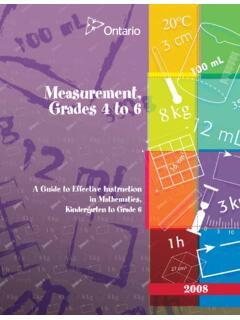




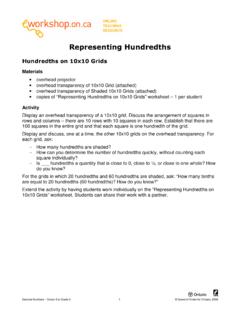




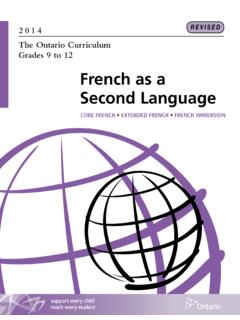
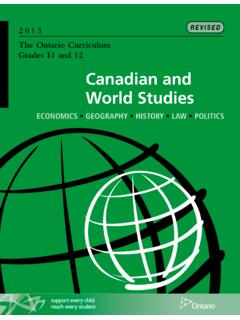
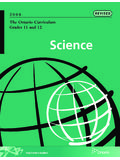
![The Ontario Curriculum, Grades 1-8, Language [revised] 2006](/cache/preview/d/5/3/5/d/c/7/4/thumb-d535dc7439a04910d8a17bf7f1d6b83f.jpg)

